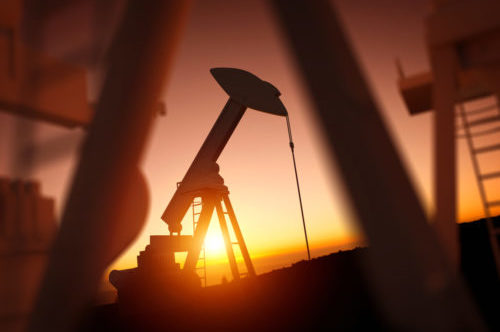In my last editions, I’ve covered the first E — efficiency. This brings us to the second problem — energy.
All systems run on some form of energy. It can take the form of electrical energy from nuclear power plants, hydroelectric generators in dams, natural gas plants, coal-fired plants, or renewable sources such as wind and solar. Energy can also be provided in the form of human labour, which is fuelled by food.
Money is a form of energy. It takes energy to produce profits in the form of money. Money is a store of value, which can be used in the future to release energy through the purchase of electricity, buying inputs, or paying wages. Money is like a battery for storing energy between the input and output stages in the supply chain.
Complex dynamic systems such as the supply chain run on energy. The problem is that the energy inputs rise in a super-linear fashion relative to the scale of the system. In plain English, this means that if you double the scale of a system, you may increase the needed energy (electricity, money, or labour) by a factor of five. If you double it again, you increase the energy inputs by a factor of five again. This means that after doubling the scale of the system twice, the scale is four-times larger, but the energy inputs are 25-times larger.
When the profits from increasing the scale of the system are high and energy costs are low, these lopsided ratios of scaling functions may still be profitable on net. Yet, when profits start to shrink (because of competition from disruptive technologies) and energy prices start to rise (because of government regulation and inflation), the impact of energy input costs on a highly leveraged supply chain network becomes a constraint on the operation of the system as a whole.
The rising cost of energy inputs is exacerbated by outright energy shortages, as are now emerging in China and Germany. China has coal shortages — coal accounts for more than 50% of their electricity generating capacity. Germany has natural gas shortages, which may grow worse if Russia invades Ukraine and the US imposes sanctions on Russia. These energy shortages are slowing output in both countries right now. Both are export powerhouses.
Other factors weighing on the supply chain today include the pandemic and geopolitical stress. Major trading nations such as Australia and China pursued the ridiculous goal of a Zero-COVID policy, or no new outbreaks of the infection. This is impossible. It’s tantamount to pursuing a policy in which no one catches a cold. The goal is absurd, but the costs are real.
On 13 December, China closed dozens of manufacturing plants in the city of Shaoxing based on 173 reported cases of COVID. Most such cases are mild and non-fatal. Shaoxing is next to the port city of Ningbo, which is the world’s third-largest port based on container volume. More than 50,000 people in the Shaoxing–Ningbo area have been placed under quarantine.
The combination of manufacturing shutdowns and the likelihood that port operations in Ningbo will be disrupted soon will send ripples through the global supply chain. Inside the containers waiting to be shipped from Ningbo are parts needed to meet supply chain requirements at manufacturers, retailers, and distributors all over the world.
Geopolitics are another factor, as Russia invades Ukraine, China threatens to invade Taiwan, and Iran works overtime on building a nuclear weapon, with possibilities of violent retaliation, the imposition of economic sanctions, and a global restriction of free trade.
Global supply chains are already stretched to the breaking point. These geopolitical confrontations could cause the supply chain system to break down entirely, as happened in the 1930s.
The winners and losers from the crisis
There’s no easy solution to the supply chain breakdown. Complex systems collapse in a cascading fashion. Each problem leads to a larger problem downstream. The ripple effects fan out, but they cannot be reversed. The river doesn’t flow backwards.
Efforts to solve particular problems by hoarding, overordering, or seeking new sources of supply only make the situation worse. Those remedies come at the expense of someone else in some other supply chain. It’s a zero-sum game. The overall situation grows more dire, even if Band-Aids provide temporary relief to some.
If you consider supply chains as belonging to each company that participates or even to groups of companies in the chain (the ‘enhanced supply chain’), you’re missing the bigger picture. The global supply chain is a system of systems. Each separate supply chain system is complex, but the system of systems is immeasurably complex. Trying to model this complexity would require a processing power greater than the entire computational capacity of the planet. We call this system of systems the ‘meta supply chain’.
Increasing output doesn’t help when the transportation lanes are blocked. Marshalling more transportation lanes doesn’t help when the warehouses are full. Getting some deliveries to manufacturing centres doesn’t help when other critical deliveries are late. Profits are eaten alive by higher energy costs, higher labour costs, higher inventory costs, and lost sales.
US government policy is trying to increase oil and natural gas costs in order to enhance the attractiveness of wind and solar energy. These Green New Deal policies will fail. While wind and solar have a place, such intermittent sources of energy can’t maintain the output levels needed to run a modern power grid and can’t scale fast enough to meet rising energy demands. Meanwhile, higher costs for gasoline, jet fuel, diesel, and natural gas will exacerbate existing problems in the supply chain.
As noted, collapse is unidirectional. Once water goes over the waterfall, you cannot push it back up the falls. The meta supply chain will have to find a new level. It will be slower and more costly but perhaps more robust to future failure.
The biggest loser will be China, because it’s the source of many inputs in the broken supply chain that will be abandoned. The biggest winner will be the US, because it has the greatest capacity to onshore broken links and build replacements for lost capacity elsewhere.
Still, reconfiguring the meta supply chain will take 5–10 years to accomplish. In the meantime, investors should expect empty shelves, higher costs, and slower growth in companies that are most affected by the breakdown. I’ll be highlighting those winners and losers in future editions…
All the best,
 |
Jim Rickards,
Strategist, The Daily Reckoning Australia
This content was originally published by Jim Rickards’ Strategic Intelligence Australia, a financial advisory newsletter designed to help you protect your wealth and potentially profit from unseen world events. Learn more here.

